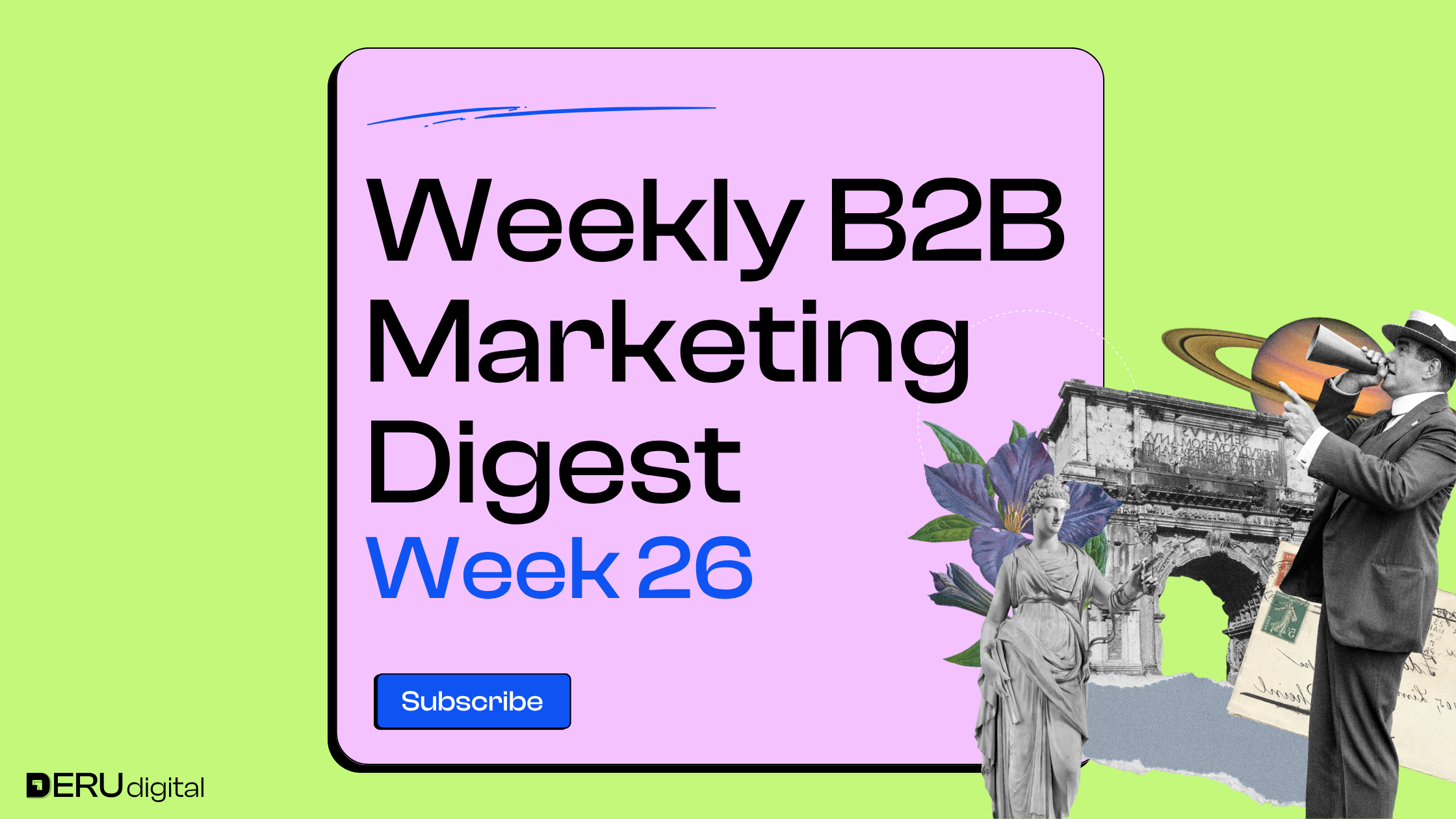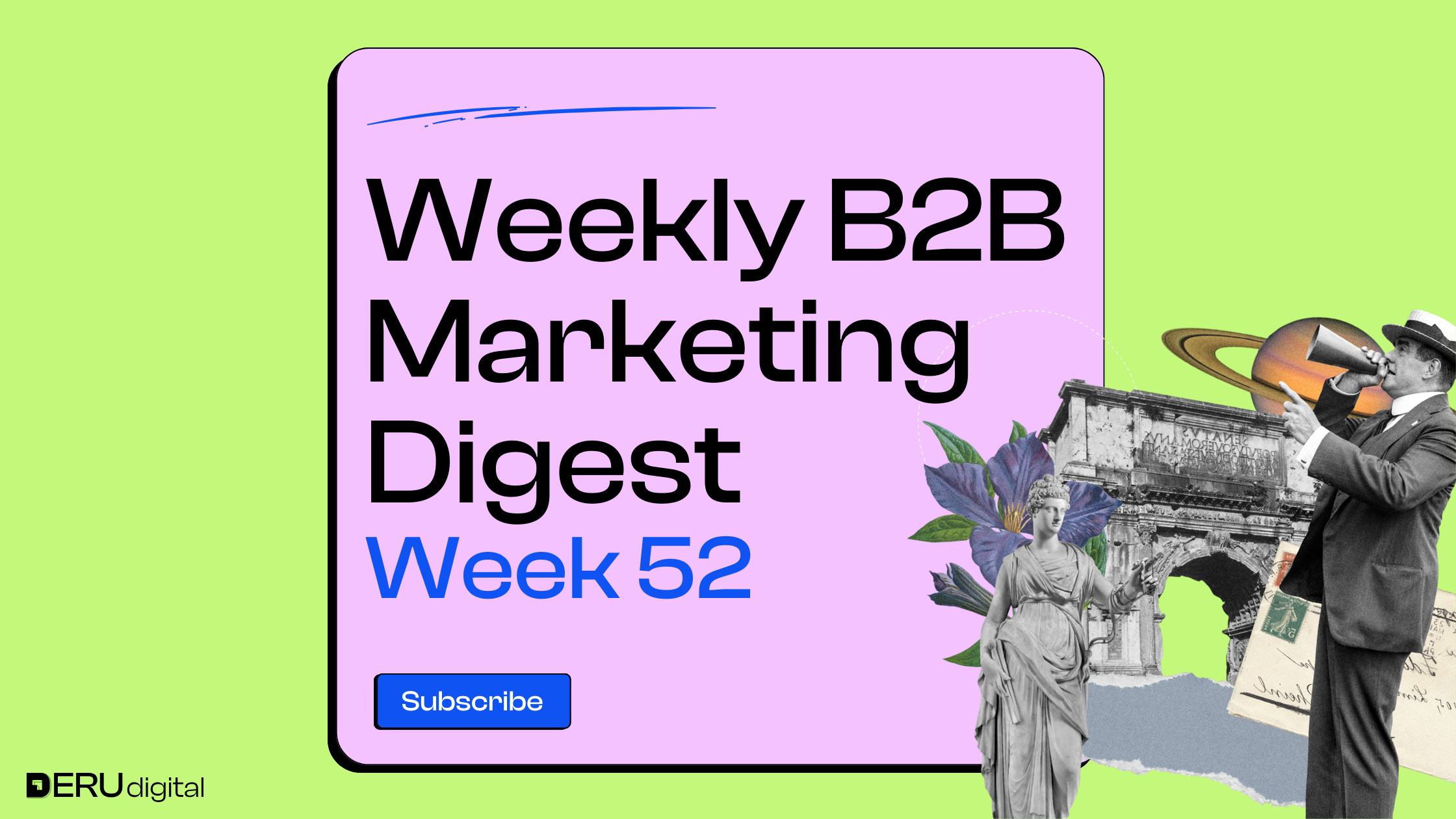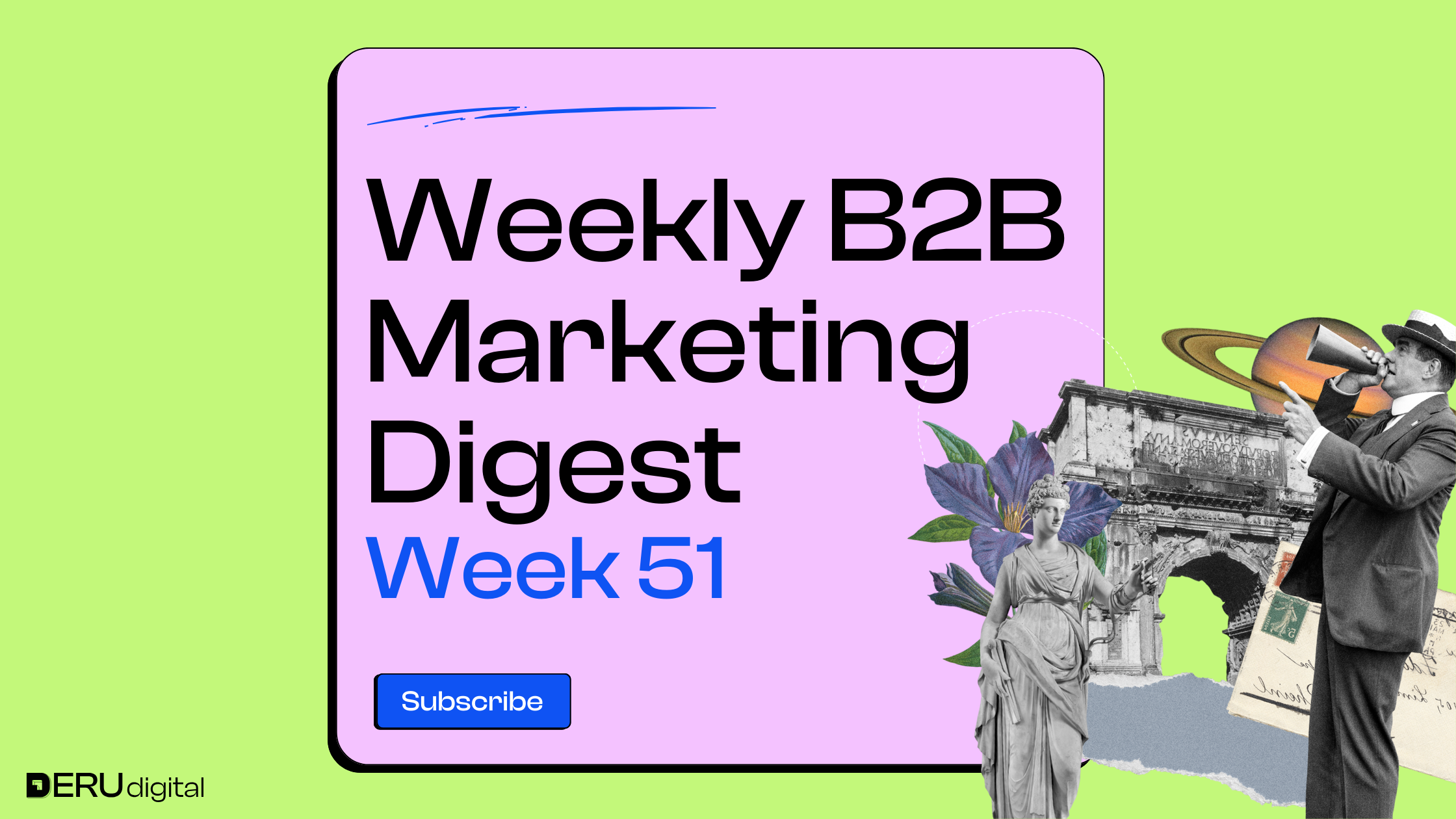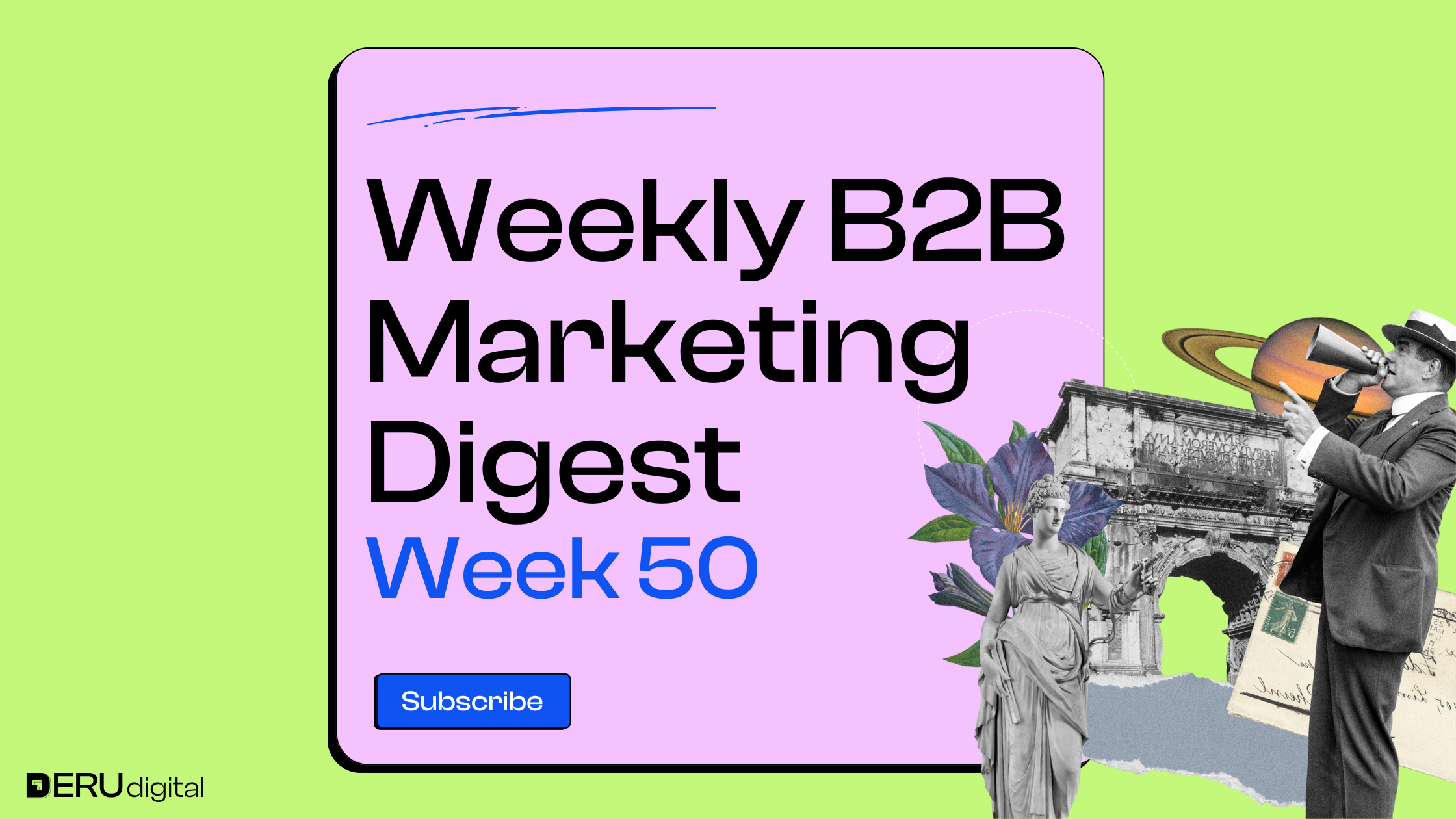INSIGHTS FROM EXPERTS ON LINKEDIN
Ben Scandlen calls out a common mistake in revenue forecasting: building plans around MQLs without knowing if they actually lead to closed deals. He shares how a client confidently mapped out their growth using conversion rates, only to realize no one had checked if MQLs were tied to revenue at all. Before presenting another marketing dashboard, it might be worth checking if those metrics actually reflect business outcomes.

Liam Moroney noticed something off in the search data, branded search volume was steady, even rising, but click-through rates were falling. That can make it look like interest is dropping when it’s really just the way people engage that’s changing. It’s a reminder that clicks don’t always tell the full story, especially when brand perception is happening beyond what we can measure.

Krists Jakabsons makes the case that LinkedIn can be totally worth the cost if you’re using it right. After looking at closed deals for a client, the ones with LinkedIn touchpoints were 5x bigger and closed nearly 13% faster. LinkedIn might not always deliver in traditional attribution reports, but it clearly plays a big role in moving high-value deals forward.
Nick Avaria, who’s built and sold 7 agencies, credits one key dashboard for giving agency owners total visibility into their business, covering everything from margins and MRR to team capacity and forecasting. If you’re running a $100K+/month agency and making gut decisions or are unsure about profitability, this could be a game-changer. It’s the exact system he used himself, now powering dozens of fast-growing agencies.

Pranav Piyush shares how his team at Paramark skipped all the usual startup marketing playbooks – no Google ads, no direct response – and still grew ARR 10x, hired 15 people, and raised $6M. Instead, they bet big on content, community, and going after the 95% not in-market yet. It’s a long-game strategy, and it’s working because they believe deeply in their product.
Steffen Hedebrandt points out that many marketers miss a basic but powerful move: adding UTM tags to website links in your LinkedIn profile. It’s a small step that makes it easy to track what content drives leads, pipeline, and revenue from organic social. If you’re struggling to show the impact of your LinkedIn efforts, start here.

WHAT'S NEW IN THE INDUSTRY
A new study reveals that A/B testing on platforms like Google and Meta can produce biased results due to “divergent delivery,” where each ad version is shown to different user groups. This means ad performance may reflect user targeting more than creative effectiveness, giving marketers a false sense of accuracy. For strategic decisions beyond the platform, advertisers are advised to use more rigorous methods or treat A/B test results with caution.

Marketing isn’t just about getting noticed; it’s about being remembered when buyers are ready to act. This article highlights how different types of memory and attention impact branding, especially in B2B, where buying decisions are made by groups. LinkedIn’s Dwell Time metric shows how measuring attention helps marketers shape creative assets that leave lasting impressions and build long-term brand preference.

Google Analytics now includes Consent Signal Ratings, grading your Consent Mode implementation as Excellent or Good. This new tool helps advertisers stay privacy-compliant, especially important in GDPR regions, where incorrect setups could harm conversion tracking. If your setup isn’t rated Excellent, it’s time to double-check your GTM or consent configurations to avoid data loss.

Microsoft Advertising now lets you see where your Audience Ads are appearing on mobile, including app names and bundles, and allows exclusions at multiple levels. A new dashboard offers granular filtering, helping advertisers cut waste and protect brand safety. Microsoft-owned apps still can’t be excluded, but this update brings Microsoft closer to Google in placement transparency.
Google is testing a new feature that gives you control over which website pages are used to generate dynamic search ads. You can now exclude low-value pages or try to prioritize high-performing ones, though inclusion functionality seems limited for now. The feature works at the campaign level only, but it’s a promising step toward cleaner, more relevant ad generation.
Advertisers can now A/B test broad match keywords directly within a single Smart Bidding campaign, no cloning needed. The experiment splits traffic between current keyword match types and broad match variants, while syncing updates across both arms. It’s a faster, more accurate way to measure broad match performance, as long as you’re not using portfolio bid strategies.
That’s the scoop for this week! If you found this valuable and any useful insights caught your eye, feel free to share them with your network.
Until next week!



